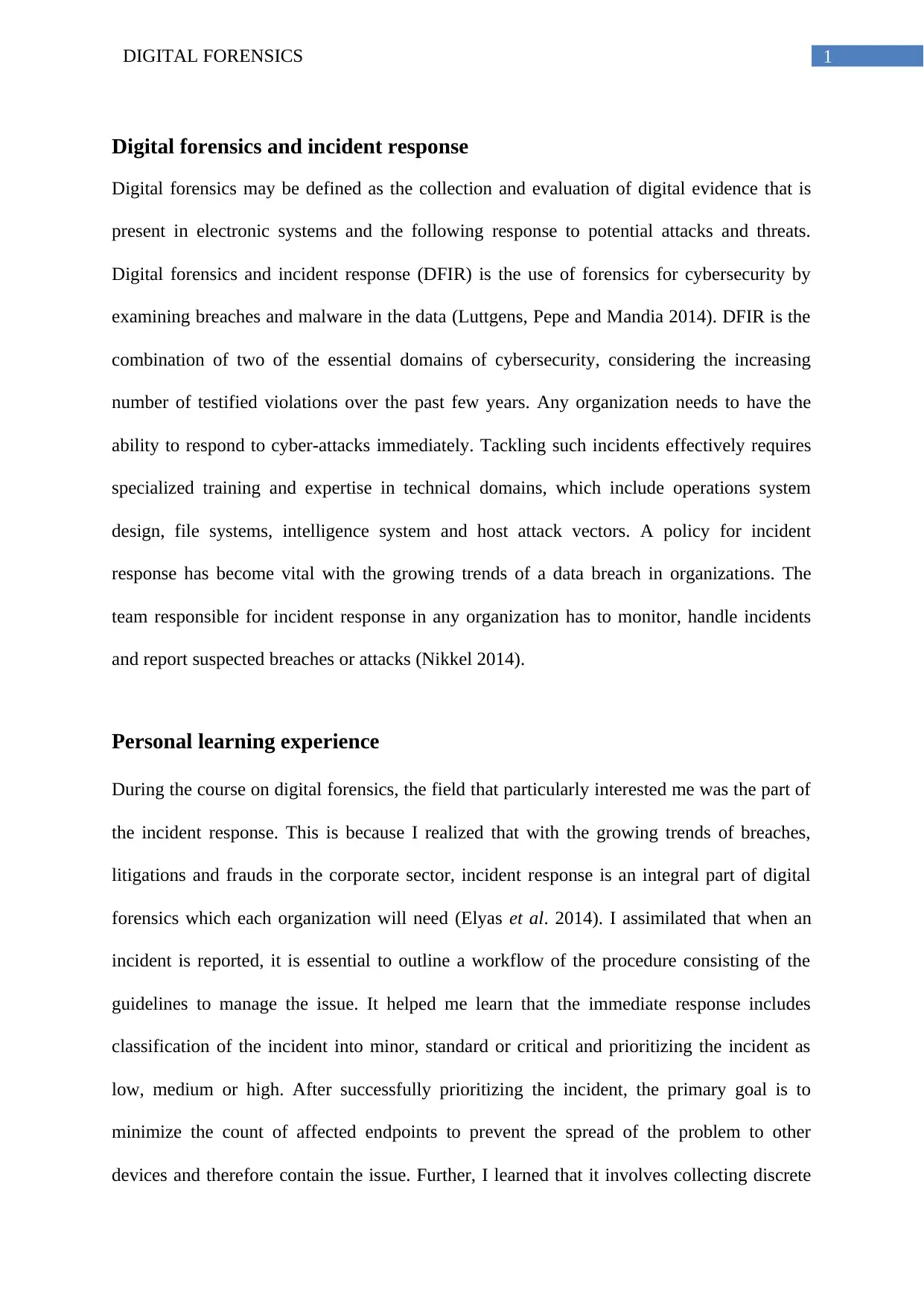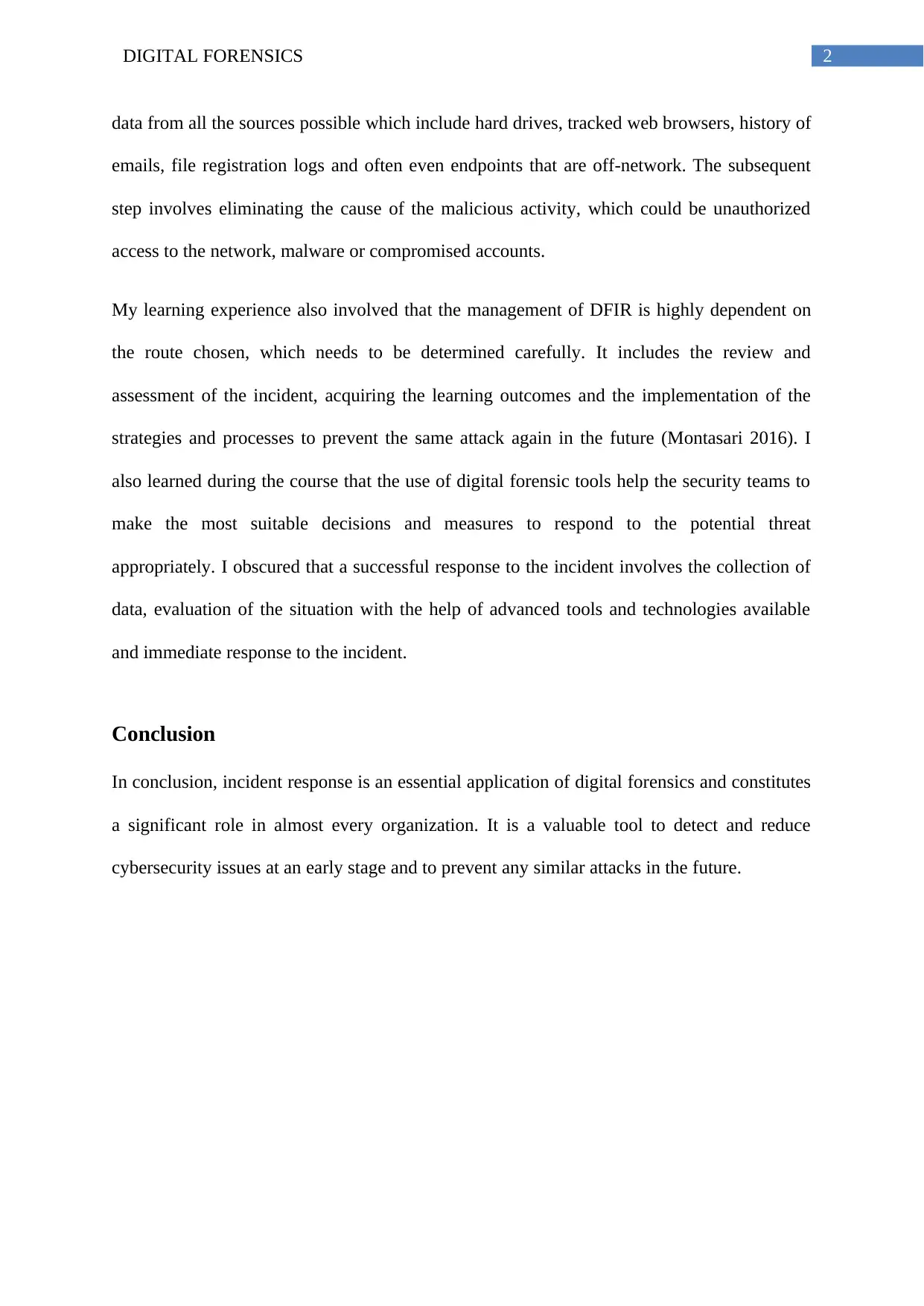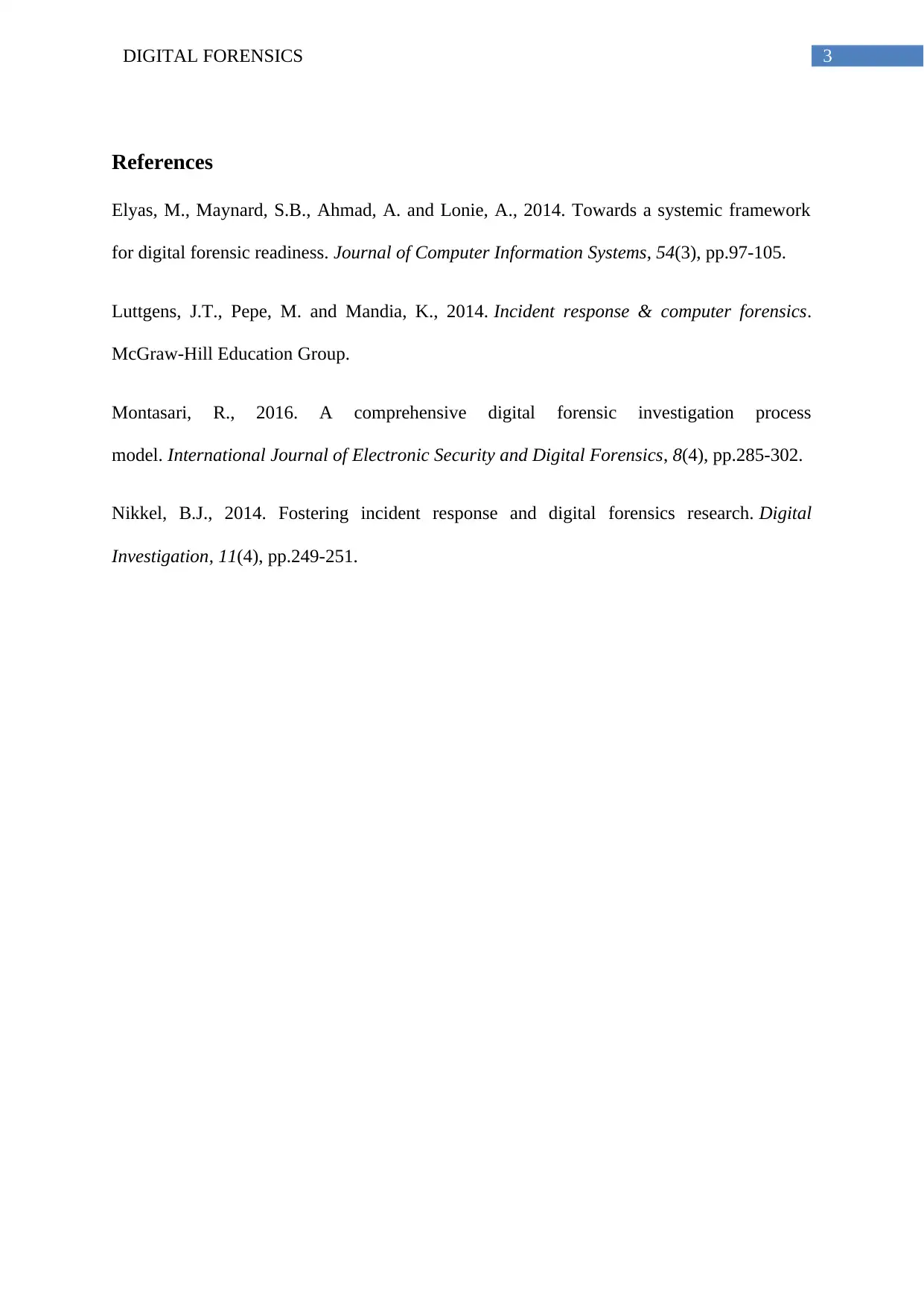Digital Forensics and Incident Response - University Assignment
VerifiedAdded on 2022/08/31
|4
|727
|19
Report
AI Summary
This report delves into the realm of digital forensics and incident response (DFIR), emphasizing its critical role in cybersecurity. It defines digital forensics as the collection and evaluation of digital evidence to address cyber threats and details how DFIR combines two essential cybersecurity domains to examine breaches and malware. The report underscores the necessity of incident response policies and the importance of a specialized team to monitor, handle, and report cyberattacks. The author shares their personal learning experience, highlighting the significance of incident classification, prioritization, data collection from various sources, and the elimination of malicious activity. The report also discusses the importance of choosing the right DFIR approach and using digital forensic tools for effective decision-making and concludes that incident response is vital for detecting and mitigating cybersecurity issues and preventing future attacks. References to relevant literature are included.
1 out of 4











![[object Object]](/_next/static/media/star-bottom.7253800d.svg)